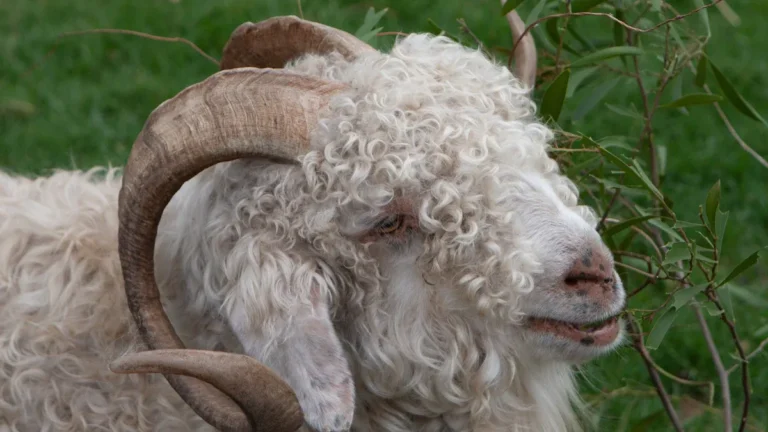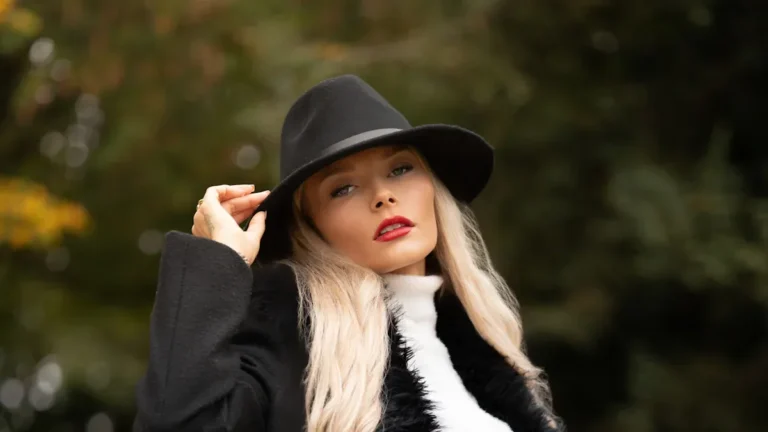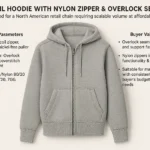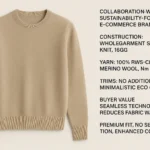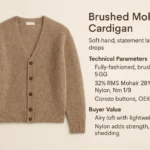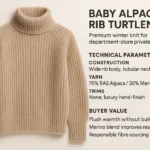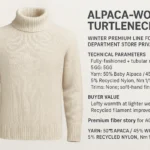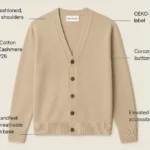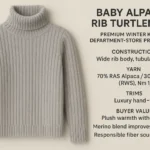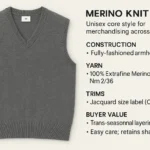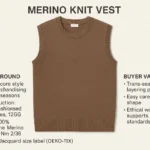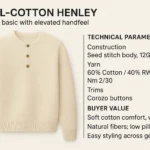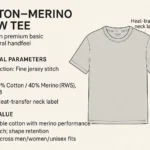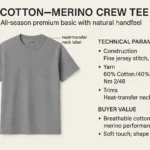
You might know mohair as a fancy natural fiber. It comes from the Angora goat, not the Angora rabbit. The word “mohair” comes from the Arabic word “mukhayyar.” This word means “chosen” or “select.” People have liked this fiber for hundreds of years.
Mohair fabrics show up in old Sumerian records and the Old Testament. This shows they were used in early ceremonies. In the 1400s and 1500s, Ottoman Turkey made a royal business with this special fiber.
Today, most mohair comes from a few main places:
-
South Africa makes about 51% of the world’s mohair.
-
Texas is also a big maker.
Many people now want mohair from good sources. They want to make sure animals are treated well and nature is safe.
Key Takeaways
-
Mohair is a fancy fiber from the Angora goat. It is shiny, strong, and soft. Mohair is not the same as sheep wool. People use it in expensive clothes and home items.
-
South Africa and Texas make most of the world’s mohair. These places are the top producers. Many farms care about animal welfare. They follow the Responsible Mohair Standard.
-
Mohair has special features. It does not catch fire easily. It is very tough and lasts long. Mohair soaks up moisture well. It keeps away dirt and stains. This makes it good for clothes and home use.
-
When you buy mohair, check for certifications. These show animals are treated well. They also show farms use good methods. This helps you support responsible makers.
-
Azknit gets top-quality mohair and uses safe methods. They sell knitwear that is comfy and stylish. Their products are made with care for animals and the planet.
Mohair Basics

What is Mohair?
You might wonder what makes mohair different from other fibers. Mohair comes from the long, silky hair of the Angora goat. People often call it mohair wool, but it is not true wool like the kind from sheep. Mohair fiber stands out because of its shine, strength, and softness. You can find it in luxury clothing, blankets, and even upholstery.
When you look at mohair fiber, you see that it comes in different grades. The age of the goat affects the quality. Here is a table to help you understand the main categories:
|
Quality Category |
Description |
Micron Range |
|---|---|---|
|
Kid |
The hair of the very young goat, the finest and most valuable, used for clothing. |
24-29 microns |
|
Young Goat |
Includes mohair fibers that are also fine. |
24-29 microns |
|
Adult |
The hair of an adult Angora goat, used for carpets and upholstery. |
34-40 microns |
You can see that kid mohair fiber is the softest and most prized. Adult mohair fiber is thicker and often used for items that need to be strong, like carpets.
Mohair fiber has some special qualities that set it apart from other animal fibers. Take a look at this table to see what makes it unique:
|
Property |
Description |
|---|---|
|
Flammability |
Low flammability, burns at low temperature, and produces bead-like ash. |
|
Durability |
Highly durable and strong, can be bent and twisted without damage. |
|
Elasticity |
Very elastic, can stretch to 130% of its length and return to shape. |
|
Moisture absorption |
Absorbs moisture up to 30% without feeling wet, reducing chill risk. |
|
Setting |
Retains extension or deformation, useful in rug manufacturing. |
|
Luster |
Known for its luster due to closed scale formation, can be enhanced through processing. |
|
Dyeing |
Can be dyed in brilliant colors that resist fading. |
|
Soiling resistance |
Exhibits good resistance to soil and desoiling due to its smoothness. |
|
Felting |
Very low tendency to felt compared to other animal fibers. |
|
Light weight |
Blends well with wool, producing lightweight fabrics suitable for warm climates. |
|
Length |
Average fiber length of about 300 mm, prized for its length in textile applications. |
Tip: If you want a fabric that feels soft, looks shiny, and lasts a long time, mohair wool is a great choice.
Origin and History
The story of mohair goes back many centuries. The word mohair comes from the Arabic word “mukhayyar” (مُخَيَّر), which means “chosen” or “select.” People used this word to describe a special fabric made from the hair of the Angora goat. Over time, the word moved through Spanish and Italian, and by 1570, it became part of the English language. The name changed a bit to sound more like “hair,” but it always meant a high-quality fabric.
You might see mohair wool in old records from Sumer and even in the Old Testament. People used it in ceremonies and royal clothing. Traders and kings valued mohair fiber for its beauty and strength. Today, you still see mohair wool in luxury products around the world.
Even though people call it mohair wool, remember that it is not true wool. Wool comes from sheep, but mohair fiber comes from goats. In stores, you might see labels that say “mohair wool” because it helps people understand the product. Still, the two fibers are different in how they look, feel, and perform.
Mohair Qualities
Texture and Luster
When you touch mohair, you notice its smooth and silky feel right away. The fibers have a natural shine that makes fabrics look bright and eye-catching. This shine, called luster, sets mohair apart from many other animal fibers. You might see mohair used in clothing and home items where a glossy finish is important.
A scientific study compared mohair and wool fabrics. The results showed that mohair fabrics are thicker and have more bending rigidity than wool. This means mohair feels a bit firmer and holds its shape well. Wool, on the other hand, stretches more and has higher shear rigidity. If you want a fabric that keeps its form and shines, mohair is a great choice.
Note: The luster of mohair comes from its smooth surface. This helps it reflect light and gives it a glowing look.
Durability
You want your clothes and home items to last. Mohair stands out because of its strength and resilience. It can handle bending and twisting without breaking. This makes it a top pick for luxury products that need to last a long time.
Let’s see how mohair compares to other luxury fibers:
|
Fiber |
Durability |
Softness |
Environmental Impact |
|---|---|---|---|
|
Mohair |
Strong and resilient |
Less soft than cashmere |
Resource-intensive farming |
|
Cashmere |
Soft but less durable |
Very soft |
Significant impact due to grazing |
|
Alpaca |
Softer than sheep fibers but less durable than mohair |
Softer |
Hypoallergenic but not as strong as mohair |
-
Cashmere feels softer but does not last as long and affects the environment more.
-
Alpaca is softer than sheep fibers but does not match mohair in durability.
If you want a fiber that combines beauty and toughness, mohair is a smart option. You get a fabric that looks good and stays strong for years.
Mohair vs. Other Fibers
Mohair vs. Wool
When you compare mohair to regular wool, you notice some big differences. Mohair comes from the Angora goat, while sheep wool comes from sheep. Both fibers keep you warm, but they feel and look different. Mohair wool feels smooth and soft. You will not feel itchy when you wear it. Sheep wool, unless it is Merino, can sometimes feel prickly on your skin.
Take a look at this table to see how mohair and sheep wool compare:
|
Feature |
Mohair |
Sheep Wool |
|---|---|---|
|
Fiber Structure |
Flat scales |
Scales that can feel prickly |
|
Texture |
Smooth, non-itchy |
Can feel itchy (except Merino) |
|
Natural Luster |
Shiny, silk-like appearance |
Less luster |
|
Rarity |
Rare and complex to produce |
More common |
|
Cost |
Generally more expensive |
Generally less expensive |
|
Durability |
Very durable |
Very durable |
|
Moisture Wicking |
Yes |
Yes |
You can see that mohair wool stands out for its shine and smoothness. Mohair also costs more because it is rare and harder to produce. Both fibers last a long time and keep you dry by wicking away moisture.
Tip: If you want a sweater that feels soft and looks shiny, mohair wool is a great choice.
Mohair Wool in the Market
You will find mohair wool in many luxury products. Designers use it for sweaters, scarves, and even high-end suits. Mohair wool is popular because it holds color well and keeps its shape. You might see it in home items like blankets and upholstery, too.
When you shop for mohair wool, you may notice it costs more than regular wool. This higher price comes from the way farmers raise Angora goats and the careful process of making mohair. Many brands now focus on ethical mohair wool, making sure goats live well and the environment stays safe.
Here are some reasons why people choose mohair wool:
-
It feels soft and smooth on your skin.
-
It shines and looks bright in any light.
-
It lasts a long time, even with regular use.
-
It resists dirt and stains better than many other fibers.
You can enjoy mohair wool in many ways, from cozy sweaters to stylish home décor. When you pick mohair wool, you get both beauty and strength.
Mohair Production
Angora Goats
You get mohair wool from a special animal called the angora goat. These goats have unique traits that make them perfect for mohair production. Their fleece grows fast and stays soft and shiny. Angora goats have a calm nature and can live in different climates. They need good food to grow high-quality mohair.
Here is a table to help you see what makes the angora goat special:
|
Characteristic |
Detail |
|---|---|
|
Fleece Growth Rate |
2 to 2.5 cm per month |
|
Shearing Frequency |
Twice a year (spring and fall) |
|
Fleece Weight (Males) |
8 to 10 pounds per shearing |
|
Fleece Weight (Does) |
4 to 6 pounds per shearing |
|
Diameter of Mohair |
20 to 40 microns |
|
Annual Production |
2.4 to 5 kg per animal |
|
Fiber Quality |
Lustrous, loose crimp, dyes easily |
|
Age Impact on Fiber |
Finest from kids, coarser as goats age |
You will find that the youngest angora goats give the softest mohair wool. As the goats get older, their fiber becomes thicker. Farmers care for these goats to keep the fleece clean and healthy.
Shearing and Processing
You might wonder how farmers turn the fleece from angora goats into mohair wool. The process starts with shearing. Farmers shear angora goats twice a year. This helps keep the fiber long and reduces rough fibers. After shearing, workers sort the mohair by length and quality. They clean the fiber to remove dirt and oils. This step is called scouring.
Next, the mohair wool goes through carding. This untangles and lines up the fibers. Spinning comes after carding, turning the fiber into yarn. Mohair wool takes dye very well, so you see it in many bright colors. Finishing steps make the yarn soft and shiny.
Tip: Shearing angora goats twice a year helps keep the mohair wool soft and strong.
Main Regions
You will find most mohair production in a few key places. South Africa leads the world, making more than half of all mohair. Texas in the United States is also famous for its angora goats and mohair wool. Other countries like Turkey, Argentina, Australia, and New Zealand also produce mohair, but in smaller amounts.
Here are some facts about mohair production around the world:
-
The world produces about 15,000 tonnes of mohair each year.
-
South Africa and Texas are the top regions for angora goat farming.
Animal welfare is very important in these regions. Many farms follow the Responsible Mohair Standard (RMS). This standard makes sure angora goats get good care and that farms use safe land practices. Some companies use extra rules, like Kering’s Animal Welfare Standards, to protect the goats even more.
|
Standard Name |
Description |
|---|---|
|
Responsible Mohair Standard (RMS) |
Ensures angora goats are treated well and promotes best practices in animal care and land management. |
|
Kering’s Animal Welfare Standards |
Sets high rules for animal treatment and asks for constant improvement. |
You can feel good about choosing mohair wool from these regions. Farmers work hard to keep angora goats healthy and happy, making mohair a true luxury fiber.
Uses of Mohair

Fashion and Apparel
You see mohair fabric in many high-end clothing items. Designers choose it because it feels soft, looks shiny, and lasts a long time. When you wear a sweater or scarf made from mohair fabric, you notice how lightweight and comfortable it feels. This fabric resists wrinkles, so your clothes keep their shape all day.
Here are some common ways you find mohair fabric in fashion:
-
Sweaters and cardigans that feel cozy and smooth
-
Scarves and shawls that shine in the light
-
Suits and coats that look elegant and stay crisp
Thicker mohair fabric works well for outerwear. You might see it in stylish jackets or even in luxury drapery. The luster and strength of mohair fabric make it a favorite for people who want both beauty and durability in their wardrobe.
Tip: If you want a garment that stands out and lasts, try something made with mohair fabric.
Home and Other Uses
You also find mohair fabric in many home products. Its softness and warmth make it perfect for blankets and throws. Upholstery made from mohair fabric feels smooth and holds up well over time. Sofas and armchairs covered in this fabric look rich and resist wear.
In your home, you might notice mohair fabric in:
-
Blankets and throws that keep you warm
-
Rugs and carpets that feel soft under your feet
-
Curtains that hang beautifully and block light
Mohair also serves important roles outside of clothing and home décor. Factories use it for filtration, insulation, and soundproofing because it is strong and durable. This makes mohair a smart choice for both comfort and function in many settings.
Ethics and Environment
Animal Welfare
You may wonder how farmers treat Angora goats for mohair. Animal welfare is very important in this business. Many farms use strict rules to keep goats safe and protect the land. The Responsible Mohair Standard (RMS) gives clear rules for treating goats well. This standard tells farmers to follow the Five Freedoms. These freedoms mean goats get enough food, water, and space. They also must be kept safe from pain and stress.
Here is a table that explains how the RMS helps:
|
Aspect |
Description |
|---|---|
|
Standard Name |
Responsible Mohair Standard (RMS) |
|
Purpose |
To make a global and certifiable rule for mohair production. |
|
Compliance Requirements |
Farmers must follow the Five Freedoms and care for the land. |
|
Scope of Management |
Includes careful use of pesticides, water, and fertilizers in mohair farming. |
You can check for certifications when you buy mohair items. These show that farms treat animals kindly and care for nature.
|
Certification Name |
Description |
|---|---|
|
Responsible Mohair Standard (RMS) |
Made to make sure Angora goats are treated well and land is managed right. |
|
Involvement |
Created with help from farmers, animal experts, and stores to set good rules. |
|
Objectives |
Wants to reward good animal care and land use, making mohair more sustainable. |
Sustainability
You help the planet when you pick sustainable products. Mohair production uses lots of water and land. Raising Angora goats can cause soil loss and less plant life if not done right. It takes about 40-50 pounds of feed to make one pound of mohair. This shows it uses a lot of farm resources.
But mohair does not add bad chemicals to the earth like fake fibers do. It also breaks down naturally and does not harm the soil. The industry tries to do better by using smarter farming. Many suppliers now follow the Responsible Mohair Standard, which supports:
-
High standards for animal care
-
Farming that helps the land recover
-
Responsible sourcing with good tracking
Other certifications like IWTO Standards, RWS, and GOTS also help make sure mohair is made in a kind and green way. When you choose certified mohair, you support farms that care for animals and the earth.
Why Azknit Provides Better Knitwear with Mohair
Commitment to Premium Mohair Sourcing
You want knitwear that feels nice and lasts long. Azknit makes this happen by picking top mohair sources. The company works with suppliers who follow strict animal care rules. These suppliers have certifications like the Responsible Mohair Standard and Responsible Wool Standard. Azknit also checks that suppliers follow Hey Rosie’s ethical rules. This means you get yarn from trusted Italian spinners who care about animals and nature.
Advanced Craftsmanship and Innovation
Azknit uses both old and new ways to make knitwear. You get:
-
Mohair yarn from small farms in South Africa, where farmers use old methods.
-
Careful spinning in France and fiber work in Bulgaria, mixing skill and modern tools.
-
Creative blends, like the mohair silk mix in the FRIDA vest, using classic materials in new ways.
Modern design approaches for comfort and style
Azknit designers use new ideas to make clothes comfy and stylish. They focus on comfort, fit, and style, so you enjoy wearing each piece every day.
Focus on Sustainability and Ethics
Azknit cares about the planet and the people who make your clothes.
Transparent supply chain practices
You can trace each product from farm to closet. Azknit uses a clear supply chain, with each yarn ball having a special QR code for tracking.
Eco-friendly production processes
The company uses green methods at every step. This helps protect the land and keeps workers and animals safe.
Customer-Centric Quality Assurance
Azknit wants you to feel sure about every purchase.
Rigorous product testing
Every item goes through tough tests to meet high standards. Here is how Azknit checks quality:
|
Area of Interest |
Description |
|---|---|
|
Animals |
Goats get good care and gentle shearing. |
|
Environment |
Farms use smart land management. |
|
People |
Workers have safe and fair jobs. |
|
Credibility |
Experts check the process. |
|
Supply chain |
You can trace products from farm to finish. |
|
Stakeholder engagement |
Many experts help set the rules and standards. |
Responsive customer service
If you have questions, Azknit’s team is ready to help. They listen to your feedback and work to make your experience better.
You have learned why mohair is different. Here are its main features:
|
Aspect |
Details |
|---|---|
|
Definition |
Mohair is a soft, shiny white fiber from the Angora goat, Capra aegagrus hircus. |
|
Origin |
It started in Turkey and has been used in textiles for a long time. |
|
Unique Qualities |
It is strong, smooth, shiny, stretchy, and keeps color well. |
When picking mohair, check for signs that it was made the right way:
-
The animals are treated well and not hurt.
-
Suppliers have certificates and follow the Responsible Mohair Standard.
Each time you pick mohair, you help support good quality and doing the right thing.
FAQ
What makes mohair different from regular wool?
Mohair comes from Angora goats. Regular wool comes from sheep. Mohair feels smoother and looks shinier. You will notice that mohair resists wrinkles and holds color better than most sheep wool.
Is mohair itchy to wear?
Most people find mohair soft and comfortable. Kid mohair feels especially gentle on your skin. If you have sensitive skin, you may want to try a small item first.
How do you care for mohair clothing?
Always check the care label. Hand wash mohair in cool water with mild soap. Lay it flat to dry. Avoid wringing or twisting the fabric to keep its shape and shine.
Is mohair an eco-friendly fiber?
You help the planet when you choose certified mohair. Mohair is biodegradable and comes from renewable sources. Look for products with Responsible Mohair Standard certification for better animal care and land management.






